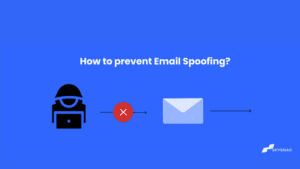How to avoid SPAM and improve email deliverability.

The ideal email campaign takes hours to create, only for your customers to receive it in their spam folders. Even worse, your consumers can report you as spam and add you to their email providers’ blacklists.
In this article, we’ll go in-depth on email deliverability and explain how to prevent your emails from ending up in the feared spam-folder using Skysnag. We’ll start with the basics but feel free to jump ahead with the links below.
Table of contents
- What is email deliverability?
- How to improve deliverability through email reputation.
- 5 tips to help your emails avoid spam
- Conclusion
What is email deliverability?
Email deliverability is the ability of an email to reach its intended recipient. This is affected by a number of factors, including the sender’s reputation, the content of the email, the recipient’s email server settings, and more.
How to improve deliverability through email reputation.
Mailbox providers perform the first round of vetting tests after sending an email campaign commonly known as “email reputation checks”. Complex formulae used in email reputation assessments come together to provide a score. That score has an impact on your email deliverability.
One of the most crucial aspects of inbox placement is reputation checks. Your inbox placement and open rates will fall if your reputation is poor, and all of your hard work will be for nothing. Utilize our free SPF record checker tool to confirm the validity of your DNS record.
5 tips to help your emails avoid spam
Build a quality email list.
Building a strong subscriber base is crucial to the success of your email marketing initiatives. Don’t buy email lists and send the recipients emails. Sending emails to those who are unaware of your existence will only drive them away. Your emails will probably be classified as spam.
Keep an eye on your sender’s reputation
Sender reputation refers to the reputation of the email address used to send out your email marketing. Email deliverability goes hand in hand with sender reputation.
Be aware of the profiles of your readers in order for you to tailor your emails appropriately. If readers feel appreciated, they will continue to support you. Adding a professional email signature to your emails is a good way to personalize them. This will allow your recipient to put a name and face to associate with the messages.
Maintain Consistency in Volume
A steady number of email campaigns without notable decreases or surges has an impact on Sender’s reputation. Aim for a regular, consistent schedule where possible. Your list will quickly become familiar with your timetable, which will aid in boosting open and click-through rates.
Include an “Unsubscribe” button in every email you send.
No one wants to lose readers, but we must accept the reality that it does, therefore It’s necessary to provide your readers the choice to unsubscribe, not just for legal reasons, but also to keep your email lists reputable and tidy. Email recipients perceive you as spamming. if you do not offer an unsubscribe option.
Why Email Authentication (DKIM, SPF) Is Critical To Email Deliverability
Enabling email authentication in your preferred email marketing solution is important. Hotmail, Gmail, and any other service providers will get the clue that you’ve given them permission to send emails on your behalf.
SPF and DKIM are the two primary methods for configuring email authentication. Let’s have a look at them.
Sender policy framework (SPF)
The Sender Policy Framework (SPF) is an email authentication protocol designed to detect email spoofing by allowing receiving mail servers to verify that incoming mail from a domain is sent from a host authorized by that domain’s administrators. SPF works by adding a special DNS record to your domain that lists all of the servers that are allowed to send emails on your behalf.
SPF transmits data for sending and receiving emails that are secure. The DNS records look at and approve this information. If they are authorized, the mail is delivered correctly and on time. If they are blacklisted, the message won’t be delivered and the mail will be labeled as “spam.”
Domain Keys Identified Mail (DKIM)
DKIM is an email authentication protocol that allows the receiving server to check if an email was sent and authorized by the owner of the email’s domain
Utilize our free DKIM generator tool to correctly ensure all your emails contain an encrypted DKIM signature in the email header. This guarantees that the email is being sent from the right domain and is not altered.
DKIM helps fix email deliverability problems and enhances your sender’s reputation with email services. The sending mail server can determine where the email marketing campaign originated.
Conclusion
Skysnag’s automated software helps you validate your DKIM records in an effort to reduce spam while increasing email deliverability. Prevent your emails from ending up in the feared spam folder by signing up using this link for a free trial today.





